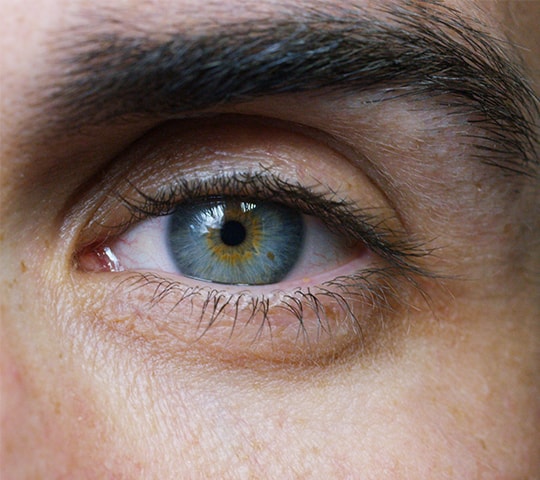Common Eye Diseases
Glaucoma
Glaucoma is a group of eye diseases that progressively damage the optic nerve. Because the optic nerve is responsible for transferring visual information from the eyes to the brain, it leads to irreversible vision loss and blindness when it’s damaged.
Unfortunately, most types of glaucoma cause no pain or symptoms in their early stages. This makes eye exams essential for diagnosing glaucoma before damage is extensive.
Learn more about glaucoma on our glaucoma page.
Age-Related Macular Degeneration
Age-related macular degeneration (AMD) is an eye disease related to the macula’s progressive deterioration, the part of the retina responsible for central vision. As the name suggests, this disease is often related to the ageing process.
There are 2 types of AMD:
- Dry AMD progresses gradually over time. It’s associated with the development of drusen deposits accumulating behind the retina. Dry AMD is the most common type of AMD, accounting for 90% of AMD cases.
Wet AMD is far less common, accounting for only about 10% of AMD cases but is responsible for 90% of all blindness resulting from AMD. It occurs when weak blood vessels suddenly break and leak blood or fluid into the macula. Wet AMD comes on suddenly with severe symptoms. It’s considered a medical emergency and requires immediate medical attention.
Cataracts
Cataracts are the clouding of the eye’s natural lens. Often related to the ageing process, cataracts are most often found in those over 60. Despite being one of the most manageable eye diseases, cataracts are the leading cause of blindness in Canada.
Learn more about cataracts on our cataracts page.
Diabetic Eye Disease
Diabetes is a systemic disease that causes several complications with the eyes. Diabetes increases your risk of developing glaucoma and cataracts but can also cause diabetic retinopathy and diabetic macular edema.
Early stages of these eye diseases have no symptoms and can lead to vision loss and blindness before you’re aware there is a problem. A comprehensive eye exam can reveal signs of diabetic eye disease and detect and diagnose diabetes, ensuring swift action to prevent sight loss.
Learn more about diabetic eye diseases on our diabetic eye exams page.
















